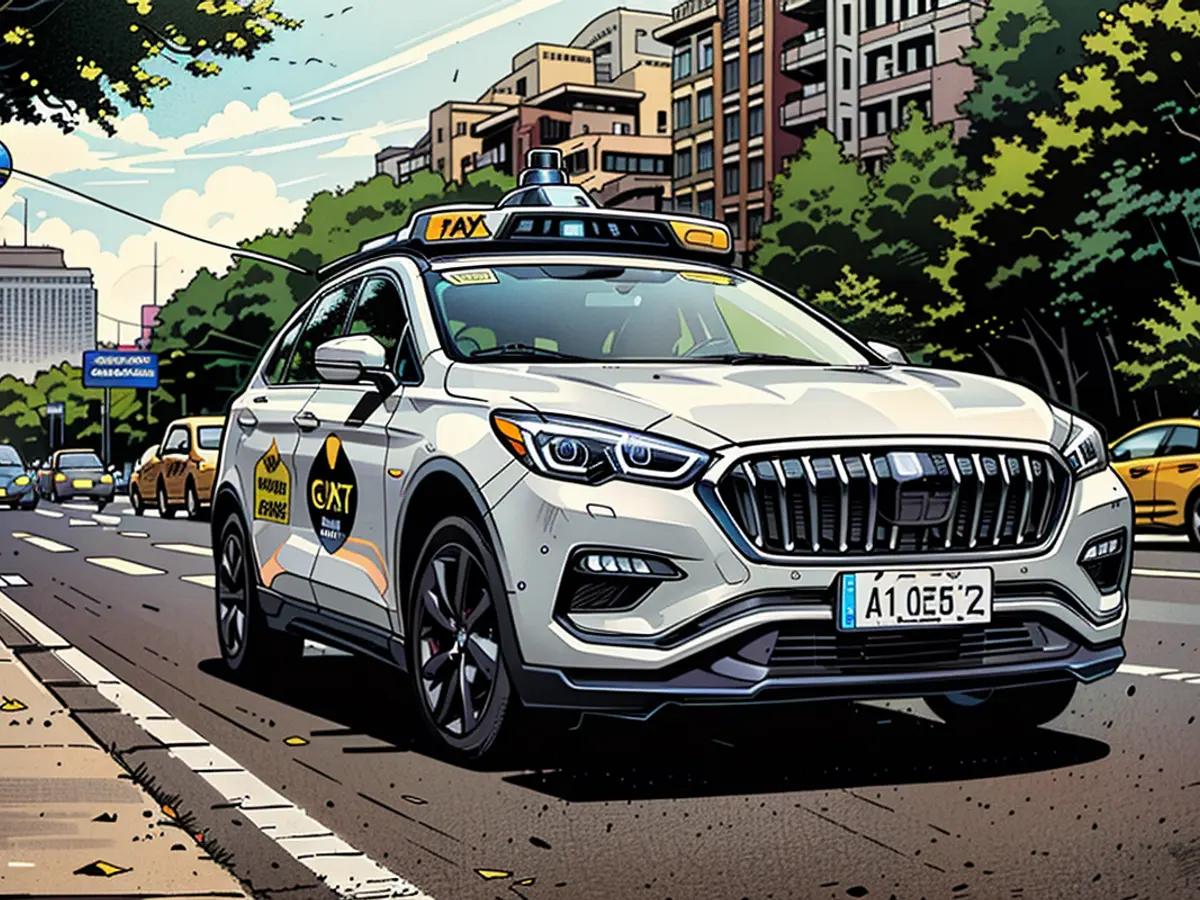Autonomous Taxi Services Triumph in China
In the rolling hills of China, self-driving taxis are becoming more common in bustling metropolises. Riding in one is certainly an unusual experience - yet it's reasonably priced.
Swerving unexpectedly, the AI's steering wheel twists like a phantom in the electric car. On the boundless highway, the robot taxi slams on the brakes - abruptly halting its journey. A truck bulldozing its way ahead triggers the vehicle to swerve sharply - a rapid reaction from the AI. Those headed from point A to point B in the industrial district of Yizhuang, recognized by factories and skyscraping office blocks in Beijing's heart, can now secure a self-driving taxi without even a driver's presence.
The fare is a steal: The 8.4-kilometer voyage costs barely over eleven Yuan, equivalent to about 1.40 Euro. Self-driving taxi companies are slashing prices underground to gain an edge.
Admittedly, the wheel spinning spontaneously in the electric car doesn't fill you with confidence. The vehicle adheres rigidly to a speed limit of 50 kilometers per hour, vastly different from ordinary traffic. The AI brakes at the slightest hint of peril, almost inhumanly quickly.
Over thirty cities in China have issued permits for autonomous driving trials. Self-driving taxis are most commonly spotted in megacities. However, in Beijing, there's still a human sitting behind the wheel, ready to take control in case of an emergency. Wuhan, famed for its central location and unfortunate Corona history, is already progressing: Here, the hundred Apollo Go taxis now operate without a driver. Powered by the tech titan Baidu, China's answer to Google, these self-driving taxis can be hailed via a mobile app. Using a scanner, passengers open the back door. They input a code received via text message to start their journey.
"Job market flexibility"
In Beijing, with its six interconnected ring roads and frequently crowded streets, self-driving taxis are authorized to only operate in specific zones outside of the city center. Yet, taxi drivers like Mr. Li, who works for one of the many Chinese ride-hailing services akin to Uber, complain: If motorists obstruct the designated lanes, the robot taxis struggle to adapt, says Mr. Li. "The city's traffic scenario is intricate." Consequently, self-driving taxis often drive slower, more cautiously, or apply the brakes.
Not far from the testing area, taxi driver Hao is currently recharging his electric car. He sees himself unfazed by self-driving competitors. "Beijing's residents are often in a rush," he says. Self-driving taxis cannot cope with impatience as well as real drivers who can modify routes to accommodate time-pressed passengers, he explains. As he connects the orange and blue taxi's standard charging cable, he expresses calm confidence in his future. "If this doesn't pay off, I can simply change jobs," he says.
Conditions comparable to those of Beijing's taxi industry remain a distant dream in Germany. Germany's legal framework is stricter and necessitates top-notch safety and liability in autonomous driving systems, asserts Philipp Kupferschmidt from consulting firm Accenture. "Additionally, German consumers tend to be more hesitant and cautious towards autonomous driving," he adds.
It's no surprise that Germany has fewer companies engaged in this burgeoning sector compared to China, according to Pedro Pacheco, an automotive analyst from market research firm Gartner. Currently, only electric minibuses made by Volkswagen in partnership with software firm Mobileye drive around in Munich and Hamburg - albeit, in test mode. By the end of the year, people in Hamburg will have the opportunity to ride in test minibuses.
Germany played a significant role in the development of autonomous driving in the 1980s, says Peter Fintl, an industry expert and Vice President for Technology and Innovation at Capgemini Engineering. However, development paths diverged. In China and the USA, manufacturers focused on achieving full automation, whereas German manufacturers opted for a "step-by-step" enhancement of existing driver assistance systems, explains Fintl.
So, what awaits German consumers from this technology? Kupferschmidt projects a gradual introduction and growth of autonomous vehicles and self-driving taxis. These vehicles will still be primarily supervised by a human or remote control, although it remains uncertain whether the technology will ever reach Level 5 - the peak where the vehicle assumes total control. "Given the present nature of the AI, it's doubtful," admits Kupferschmidt.
Legislation has already been set in stone. For instance, an autonomous shuttle bus can traverse designated and authorized areas like a trade fairground. Major manufacturers such as BMW, Mercedes, and Volkswagen are already active in autonomous driving. However, Level 5 remains far in the future, and numerous customers are already familiar with Level 2 functions like automatic parking.
Fintl notes, "Partial automation, like the highway pilot, has entered series production." The introduction of such systems in the mid-range is imminent. Yet, competition for self-driving taxis in German streets is already well on its way, according to Fintl. While the technology still needs to mature and cost benefits compared to human drivers remain to be proven, large test fleets in respective countries offer a significant advantage, he concludes.
The integration of mobility concepts, such as self-driving taxis, is revolutionizing transportation in China. In cities like Beijing, these autonomous vehicles are being utilized for specific zones outside the city center, providing an alternative for drivers like Mr. Li who are seeking job market flexibility.








